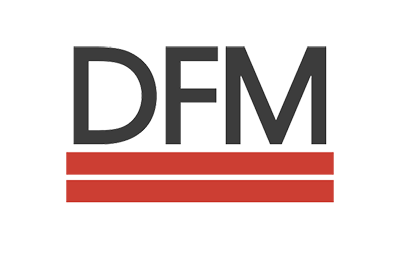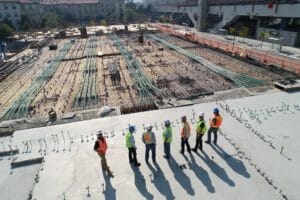Subsurface Utility Engineering (SUE) is conducted by a team of utility engineers who focus on implementing new and improving existing water pipelines, power systems, and gas pipelines. Subsurface Utility Engineering focuses on identifying existing utilities, creating plans, and executing new utility infrastructure for clients.
Subsurface Utility Engineers focus specifically on exploring buried or underground utilities and sit within the discipline of civil engineering. They will conduct risk assessments to ensure existing utilities will not threaten new development work nearby.
When Would You Need Subsurface Utility Engineering Services?
Before beginning a real estate development project or upgrading existing utility infrastructure, you must conduct a subsurface utility assessment. Dry utility coordinators (a team of utility engineers) will come and assess the new or existing property and carry out surveys, plans, and consultations to establish the best way to identify utility pipelines or systems.
What Are Examples Of Subsurface Utilities?
Subsurface or underground utilities might include electric, data, telecom cables, water, gas, sewage, and oil pipelines. Due to their essential nature, SUE ensures that any new development work does not impact the existing placement of these items.
Underground utilities often have physical indicators above ground, like valves, markers, or manhole covers. These identifiers help engineers locate and service these utilities to ensure their efficiency.
Why Is Subsurface Utility Engineering Important?
Utilities are critical elements that enable commercial, industrial, and residential properties to run efficiently. If development work unexpectedly impacts an existing utility, it could have severe health and safety implications for entire populations. Hitting a gas line could lead to fire risks, while hitting water lines can impact potable water delivery to the surrounding areas.
SUE can also help you mitigate the financial risks of poor utility installation, as it allows site developers to make informed decisions about utility efficiencies. Utility engineers can help make utility design more efficient and recommend upgrades to existing systems over new installations, which can positively impact the surrounding environment.
How Does Subsurface Utility Engineering Happen?
SUE is assessed in several ways that can help build up a physical picture of where utilities are buried:
- Utility Provider Records – Utility providers like your local gas, electric, telecom, or water company should provide graphically accurate records of a utility’s location. These drawings will help SUE services find their location.
- Vacuum or Hydro Excavation – This is a precision-led excavation technique where ground is removed by high-pressure water and air.
- Electro-magnetic locating – Use of an electro-magnetic locator to detect underground pipes. If there is a direct connection with the lines, these can also be isolated when carrying out work.
- Ground penetrating radar (GRP) – relies on radio waves to capture images below the surface of the ground. These minimally invasive methods allow utility coordinators to pinpoint the location of underground utilities without excavating.
- Acoustic systems – using sound to identify the location of a substrate utility.
- Metal detection – use of a metal detector to identify underground metalworks associated with pipelines or power systems.
- Geophysical methods – measuring the properties of the earth around the infrastructure to establish utility location.
A dry utility coordination project or SUE project could use any of these tools to identify the existing utility infrastructure.
How Is Subsurface Utility Engineering Measured?
SUE is measured in four quality levels to build up an accurate picture of the surrounding infrastructure:
QL-A
QL-A is the most accurate level of SUE available. Precision excavation tools are used to establish the precise 3D position of substrate utilities. This can guide accurate decision-making about new designs and infrastructure improvements.
QL-B
QL-B can be used to determine the 2D mapping of utilities to influence design decisions. Geophysical techniques build up an idea of the utility’s horizontal position.
QL-C
QL-C uses visual checks of utility features as they are on the ground, using items like valve boxes, markers, and manholes. This will be built up and checked using utility owner records.
QL-D
QL-D involves gathering data through digital records and physical site visits that often occur before QL-C and subsequent excavation.
How Does The Quality Matrix Influence Utility Placement?
The QL protocols allow engineers and dry utility designers to assess the location of utilities and establish the degree of confidence they have in their location. They will then build a computer-aided design impact to create a 3D image of the substrate utilities. Depending on the nature of the project, the engineers can then overlay the current utilities against any proposed project plans to determine if the renovations or new utility plan is possible.
Improve Your Project With SUE Services
Utility engineers and dry utility coordinators are essential to ensuring your new development project is a success. They can use various tools to locate utility infrastructure and manage the risks associated with any site development work.
SUE services can help you make informed decisions about the viability of your site development. Contact us today to learn how DFM Development Services can help you evaluate your underground utilities.




